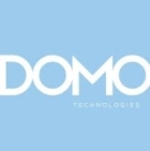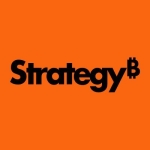What is our primary use case?
We are a solution provider and this is one of the solutions that we implement for our clients.
What is most valuable?
The filtering options are useful.
The user interface is quite good for developing reports out of models.
What needs improvement?
There is no direct connector from SAP to Redshift, so we are required to use a third-party product that was recommended by SAP. Going forward, we would like to use connectors that are developed by SAP directly and do not require us to pay any additional licensing fees. In general, this solution should support as many databases and data warehouses, including cloud-based deployments, as possible.
There are a couple of complex reports that we cannot generate using a live connection. With the full data option, however, it is possible.
Hierarchies are not supported as of now, so it would be great if there were support for two or three-level hierarchies. It is helpful when we can drill down further into the hierarchy.
I would like to see more enhancement in terms of AI and ML. Currently, they have R visualization support in the product using a direct plugin. We need to have support for Python scripting, as well.
For how long have I used the solution?
I am a consultant and I have been working with SAP Analytics Cloud for six months.
What do I think about the stability of the solution?
The solution itself is stable as of now, but we have had some challenges with connectivity. We're not sure if it is related to SAP or AWS, and it is stable at the moment, but we have had challenges.
What do I think about the scalability of the solution?
With respect to scalability, we have only uploaded about half a million records as a pilot for the customer. At this point, we are not pushing more because we don't have the data. We do have plans to build in that regard, but for now, we cannot fully judge scalability.
We are developing solutions for enterprise-level companies.
How are customer service and technical support?
The technical support is fine, and we have not had a problem. The SAP expert team is there if you need to speak with them.
Most of the technical support we are getting is from the marketplace. We get very good information from the SAP support portal.
Which solution did I use previously and why did I switch?
For analytics, I have been working with SAP for the past twenty years. I have used the on-premises solution of business intelligence.
How was the initial setup?
The initial setup is straightforward. The first time we deployed this solution it took between three and five days. This was due to some complexity that we had, including connectors. After our first experience, it now takes a maximum of two days to deploy if we have the proper documentation and connectors.
Which other solutions did I evaluate?
We have also recently tried Tableau and they are also pretty good. I do not find much difference between them. It is, however, the choice of the customer.
Some people like the Tableau reporting, whereas others like the SAC reporting, and it is based on the data being reported. SAC is pretty new on the market so Tableau is more flexible in terms of legacy support. A good example is Redshift. Tableau has a direct connection and SAC does not.
We have also used QlikView in the past.
What other advice do I have?
We are trying to get the reports out of AWS Redshift. We are consolidating all of our data in the Amazon Data Lake, and we have it in AWS S3. It is from there that we are pushing to Redshift, but we had a challenge because there is no native connector.
This is a solution that I recommend to anybody with SAP in their landscape. We used to prefer QlikView and Tableau, but as of now, I suggest trying SAP Analytics Cloud to see the results first. There is a lot of seamless integration and you can avoid a lot of licensing costs. It is also pretty good at connecting multiple SAP systems together. It is quite useful in terms of data connectivity, data transmission, and modeling.
Our customers definitely prefer SAP Analytics Cloud on Amazon Redshirt, regardless of the third-party connector that we had to use.
I would rate this solution a nine out of ten.
Which deployment model are you using for this solution?
Public Cloud
Disclosure: My company has a business relationship with this vendor other than being a customer.


















Highly recommended for Cloud Analytics, reporting and planning .